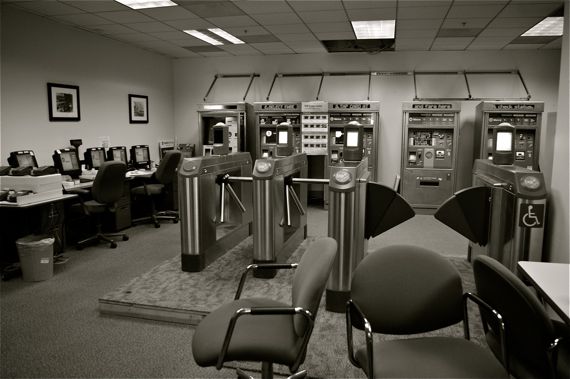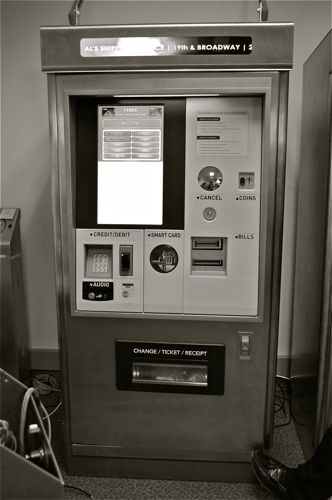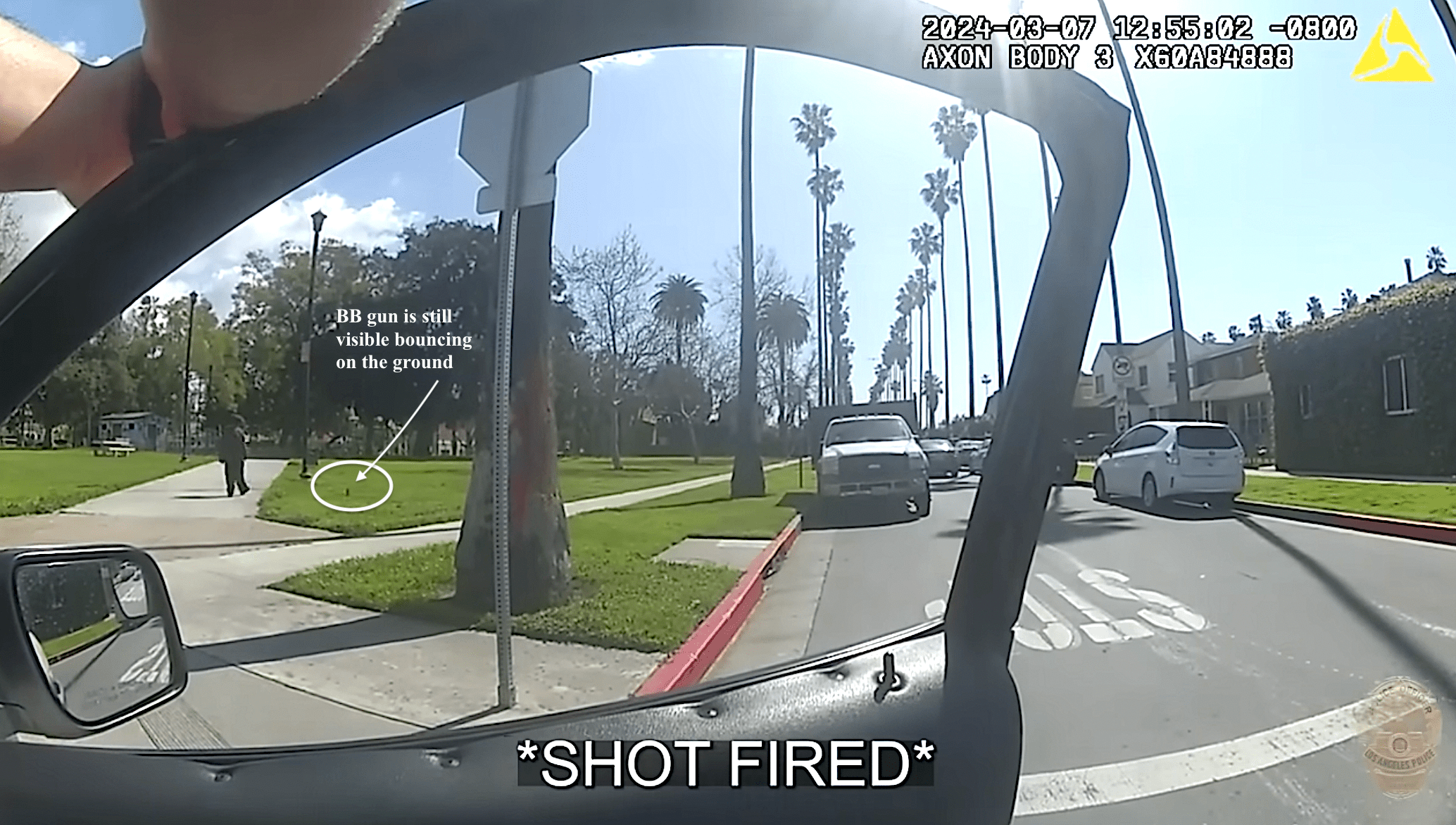Touring Metro’s “Lab” with David Sutton, Director of TAP Operations
3:14 PM PST on November 21, 2012

"Did you TAP your card?" I asked my friend.
"Yeah, I did it over there," he pointed, annoyed, at the ticket machine where he had just added money to his card.
"But you didn't TAP it," I said, indicating the validator confronting us as we stepped up onto the Blue Line platform at the Washington/Grand stop.
He looked at me like I was crazy. As an occasional Metro rider, he figured he knew what he was doing.
"I did," he protested. "Look..." he waved the receipt indicating he had just put $5 on the card.
"All you did was refill it," I explained. "You have to TAP it again here so that it deducts the fare."
Skeptical, he approached the machine.
It was nearly midnight and we were tired. I think he figured that if he humored me, he could prove me wrong and get me to stop acting like the TAP police.
"Oh," his eyes widened when it deducted $1.50. "Thank you..."
I explained that if he had tapped the card at the machine and a fare had been deducted, it wouldn't deduct the fare a second time (within a seven-minute period). Then I took a hard left at Dorkylandia and started talking about some of the changes Metro was making to the machines' signage and software to reflect the shift to the TAP card and make navigation of the TAP system more user-friendly.
His eyes glazed over.
He was an occasional rider and the intricacies of the TAP system were not really his cup of tea.
But it is precisely the occasional rider who seems to have the most difficulty navigating the system. They are the ones most likely to buy and refill their TAP cards at the station just before they board (instead of refilling at a grocery store, for example) and thus most likely be confused about how to navigate the machines or when and where to TAP their card.
Given the number of complaints the changeover to TAP has generated, it would seem natural to expect that Metro would jump on making the system more intuitive as quickly as possible. And they have, David Sutton, Director TAP Operations tells me, but change takes time.
To help me understand how the process works he offered me a tour of the "lab" Metro uses to test out its machines.
I gasped when we walked into the lab. It felt like I had entered the Metro equivalent of NORAD and I imagined Metro employees playing war games. Or maybe tracking Santa as he tapped his way through L.A.
It wasn't quite that exciting, Sutton reassured me as he pointed out two gentlemen wrangling the guts of a TAP machine.
They were testing out a battery-powered validator, he said. By and large, the placement of TAP machines had heretofore been dictated by cost and where they could be hooked up to existing conduits. After realizing that people were dutifully filling up the cards but not tapping them, Sutton suggested that placing them in more obvious locations on platforms might mitigate some of that problem, or help deal with something like the temporary crush of people at a station after a USC game or at high-volume tourist areas.
Some of what was going on in the lab included things you might not expect, like tests of the friction on cards to make sure that they wouldn't stick to each other and hamper their dispensing or the viability of temporary paper transfer cards. The bulk of the efforts being made in the lab, however, seemed to revolve around gearing the software to present the rider with a more intuitive experience.
Despite the effort to make frequent updates to the system, riders clearly are still not feeling it. And they aren't happy about the slow speed at which changes seem to be implemented. Many have complained that it must be because Metro employees don't ride the system they lord over. But the reality is not so simple.
Any time they make any change that costs money, including changes with the software, Sutton told me, they have to do a change notice to the contract with Cubic. Because of the change notice, the Metro Board needs to see it. So, Sutton has to present the set of changes he's looking to make to the board before any steps can be taken. That applies to everything from major changes focusing the selection choices for new riders vs. returning riders, to highlighting the senior menu choice in blue (as it had been highlighted in the past), to changing the electronic messages rolling across the tops of the machines, to adding more validators in more intuitively logical places.
The software changes themselves are often driven by feedback from customers and, as such, take some time to develop. As riders get more sophisticated, Sutton said, we have to work to keep up with their needs. In response to complaints about families and groups having to purchase individual cards for each member that rode back and forth to a USC game, for example, Metro is looking to find a way to make it possible for a family to buy a pass product on a single card that would allow multiple family members to board at once.
Any new changes also have to be tested first. What makes sense to an engineer might not make sense to a rider. So, Metro holds focus groups with non-riders to get their feedback on their experience navigating the system to buy single fares, senior fares, passes, etc.
In fact, he was going to hold one such focus group session the following week, Sutton said.
"Ooh, can I come??" I begged.
"No," he shut me down immediately. He wanted to see how people managed the system without any kind of outside influence.
So did I!
I guess I'll just have to continue getting my kicks watching friends and strangers bumble their way through the system at stations in the wild.
Hopefully the new posters with more specific instructions -- especially those for seniors -- and new signage on the fare collection machines being rolled out will help mitigate some of the navigation issues as the software continues to be updated. Even since speaking with him last month, I've seen some of the changes Sutton mentioned appearing at stations here and there (I don't know if they are everywhere), so Metro is definitely making an effort to move things forward, even if many riders still feel the updates are far from perfect. And Sutton has been incredibly responsive to complaints, getting on message boards (see his response to posters here) and passing along feedback I've gathered from readers to powers that be within Metro.
Despite their best efforts, there may simply be a limit to the kinds of improvements the old machines can handle. Sutton showed me the machine they are looking at for the future. It was much flashier, with a touchscreen, and the ability to present the user with a greater and more obvious set of choices at the outset. It even had the capability to offer the user instructions in several languages.

And, of course, it comes with ample space for digital advertising.
That sort of thing is almost unavoidable, it would seem. As Sutton noted, the machines don't come cheap. You won't be seeing them around the city any time soon, in other words, but they are on Sutton's radar as the direction he would like to head in.
The expense of the switch to TAP has made many question the utility of the system and whether we are getting our money's worth.
Sutton counters that, for the first time, they are able to collect more accurate ridership data. Before TAP, Metro had been unable to track riders with passes because they were only noted in the system when they first purchased the pass; they hadn't had to swipe their passes when they rode. Now that everyone has to TAP their cards, Metro will be able to have a clearer picture of when and where riders are on the move. That kind of information is important in shaping the planning process.
Still, the data isn't too specific. They aren't tracking individual riders (although you can register your card so that your balance is protected), for example. And, because riders do not need to swipe their cards when they leave the system (for those of you who were wondering, by the way. I know you're out there -- I've seen you TAP on your way out), Metro can't track trip distances or patterns in ridership. They have the capability to do so, but don't seem to be moving in that direction at present.
Also, once the gates are locked at rail stations, riders will (hopefully) be more inclined to pay to ride. There's no guarantee of that, of course. Sutton mentioned seeing someone jump the turnstile in front of him, even as he stood there talking to Sheriffs. Until the gates are locked next summer, we won't really know the extent to which people's habits change.
If nothing else, locking the gates should have the effect of making it more obvious when and where people should TAP their cards.
I just hope that when the gates are locked, they always have one wheelchair-accessible gate near the regular set of turnstiles. As a cyclist fully capable of carrying my bike up and down the stairs (or as anyone with a stroller or cart full of laundry or groceries can attest), getting through a turnstile can be a magnificent exercise in public humiliation.
Your thoughts on TAP? How are new changes working out for you? Let us know below.
Sahra is Communities Editor for Streetsblog L.A., covering the intersection of mobility with race, class, history, representation, policing, housing, health, culture, community, and access to the public space in Boyle Heights and South Central Los Angeles.
Stay in touch
Sign up for our free newsletter
More from Streetsblog Los Angeles
LAPD shoots, strikes unarmed unhoused man as he walks away from them at Chesterfield Square Park
LAPD's critical incident briefing shows - but does not mention - that two of the three shots fired at 35yo Jose Robles were fired at Robles' back.
Metro Committee Approves 710 Freeway Plan with Reduced Widening and “No Known Displacements”
Metro's new 710 Freeway plan is definitely multimodal, definitely adds new freeway lanes, and probably won't demolish any homes or businesses
Automated Enforcement Coming Soon to a Bus Lane Near You
Metro is already installing on-bus cameras. Soon comes testing, outreach, then warning tickets. Wilshire/5th/6th and La Brea will be the first bus routes in the bus lane enforcement program.




